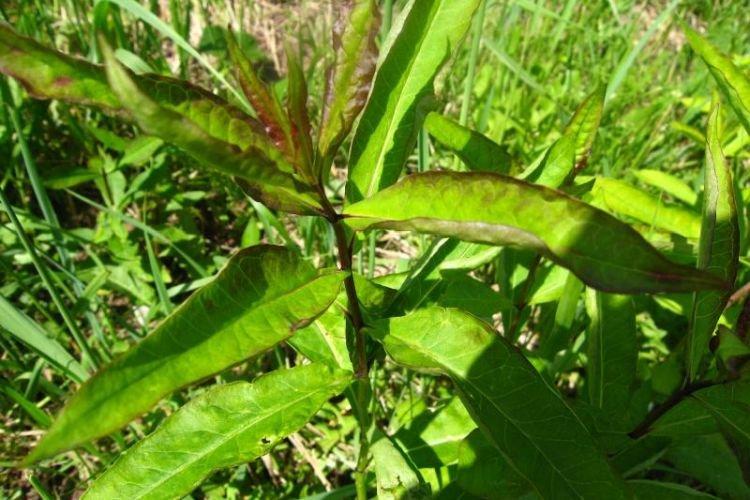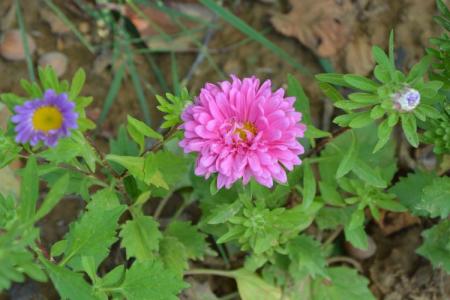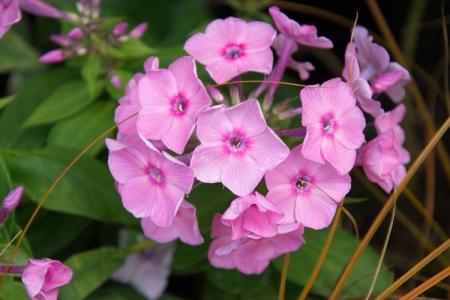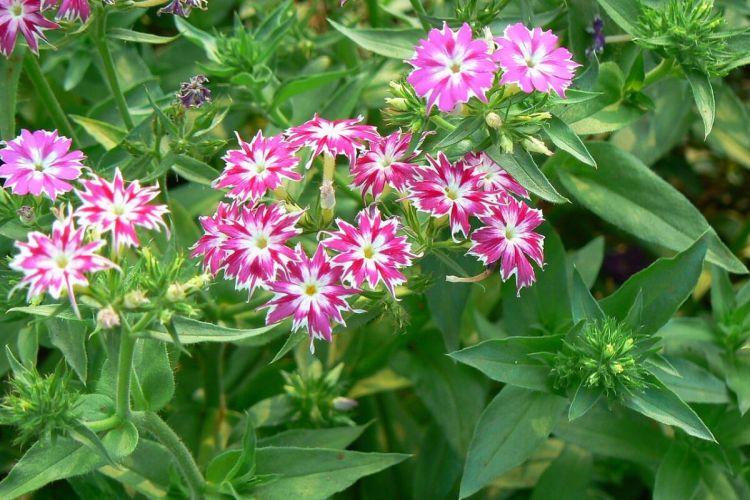
Small and multi-colored phloxes are a real decoration of any flower bed. But for flowers to really continue to delight, they must be healthy. Due to viruses and infections, buds die, and any diseases generally affect the leaves. We tell you what to look for!
Leaves turn yellow and dry
When phlox leaves suddenly begin to dry and turn yellow, this is unpleasant. And it is also dangerous, because quite serious problems can lie behind an ordinary symptom!
- Due to improper watering, phloxes dry out or, on the contrary, begin to rot;
- Dry spots leave sunburn if water gets on the leaves or the heat starts immediately after rains;
- Yellow plates with green streaks are a symptom of chlorosis, which indicates a deficiency in iron or nutrition in general. We recommend using balanced complex feeding;
- Small yellow spots, which gradually turn into ulcers and grow into holes, are left by a black cruciferous flea;
- Yellow dots gradually merge, and the leaves fade, if a colony of aphids has settled on phlox;
- Light ring spots that gradually spread can be a symptom of ring spots. The plant looks painful, deformed and dies;
- With verticillary wilting, phlox leaves turn yellow and dry, but do not fly off the stem;
- Light spots on the leaves, which fade even more, and then die off - a sign of rattle disease. It slows down growth and often spreads to phlox from tobacco seedlings;
- Jaundice is a microplasma disease, due to which the leaves turn yellow, and the rest of the plant is deformed. Phlox begin to branch more strongly, and petals and stamens more and more resemble ordinary leaves.
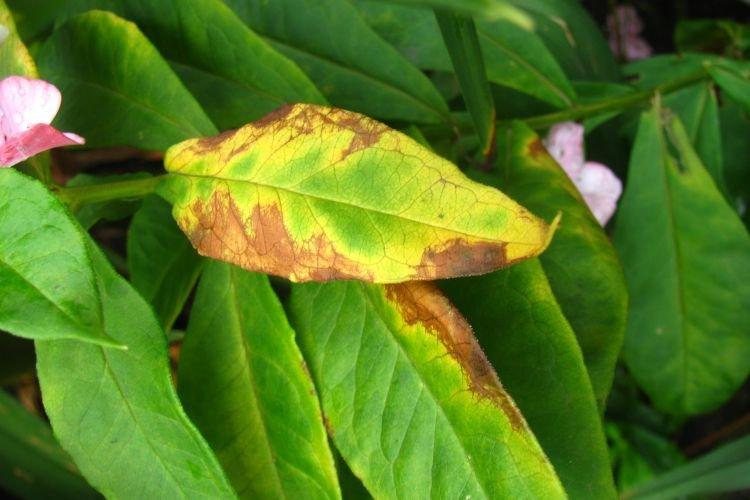
Brown spots on phlox leaves
Most often, brown spots occur due to fungus, but the problem may be in the care and lack of fertilizers. Track the regime of watering and feeding - such measures will definitely not be superfluous!
- Rust leaves bright orange spots on the leaves, which spread on cool, wet days;
- Phlox leaves are covered with brown spots in the early stages of white or gray rot;
- Dirty yellow and brown spots on the lower leaves are a symptom of phomosis. The bases of the shoots also turn brown, and the plates later become covered with black dots;
- Gray-brown spots on the leaves that grow rapidly and turn red in a circle - this is septoria.
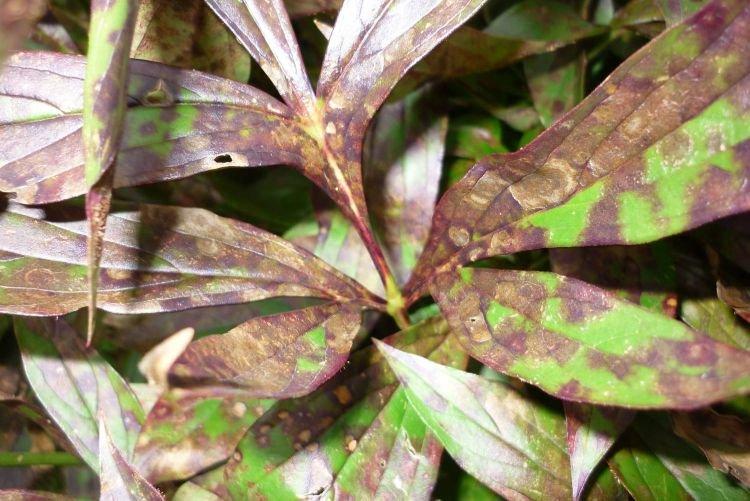
Phlox leaves turn black
Gardeners know that if the leaves begin to turn black, the chances of saving the plant are low. Even if the cause is simply root damage, not infection.
- A bacterial burn leads to the fact that whole shoots with leaves turn black and die off;
- Phloxes rarely suffer from root cancer, but then, in addition to necrotic foci, ulcers and tumors appear;
- The sooty bloom on the leaves is the sooty fungus of the same name, which is actively spread by insects;
- Dark spots of necrotic spotting appear as soon as the leaves have blossomed. Most often, the cause is the cucumber virus, if there are garden beds nearby.
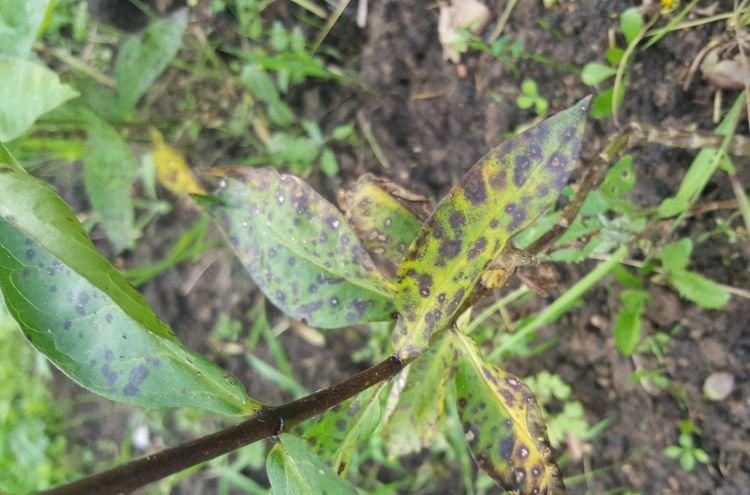
White bloom on phlox leaves
A whitish bloom or the same translucent web covers the flower beds almost every season. This is because warm, humid days are the perfect environment for fungi and pests to spread!
- Most often, a white bloom remains if phloxes have caught powdery mildew. White spots are very bright and visible from afar;
- A faded, lighter and more uniform coating of white or grayish color leaves white or gray rot, respectively;
- The spider mite sucks the juices out of the plant and at the same time braids it with a thin whitish cobweb.
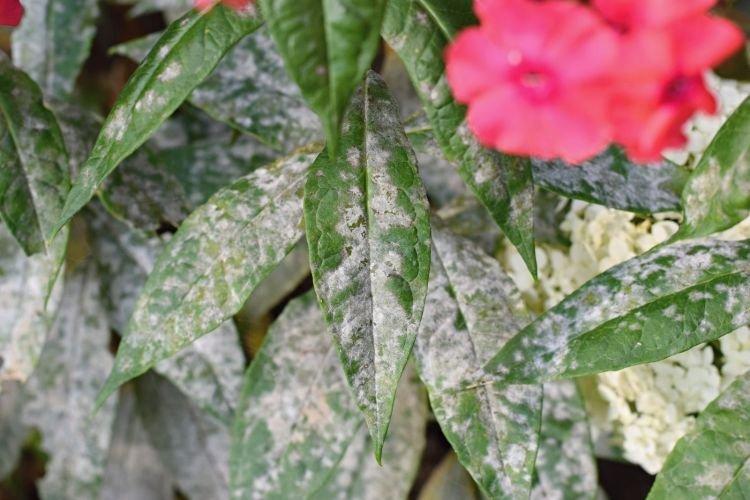
Phlox leaves curl
Phlox has rather large leaves, so you can clearly see from them when they curl and deform. Most often, the matter is in improper care, but the flower beds are not immune to viruses either!
- Phlox leaves wrinkle and deform if the flowers are too crowded in the flower bed. No plantings should be over-thickened, because they need light and air;
- When the leaves are eaten by caterpillars, beetles and slugs, at first they also curl. But as a result, only veins may remain from the plate;
- The leaves are deformed and the shoots become thinner when the phlox root system is damaged by nematodes. The stem nematode has similar symptoms and cannot be cured;
- Sometimes curling of phlox leaves can be an additional symptom of ring spot. Most often, phloxes, which grow near tomato beds, suffer from it;
- If a slobbering penny eats out from the back of the plate, they also begin to wrinkle and curl up;
- Curl changes the shape and structure of the leaves, the veins become brown, and pale green spots appear between them;
- Leafworms curl up and pupate in phlox leaves, which causes them to curl into tubes.
